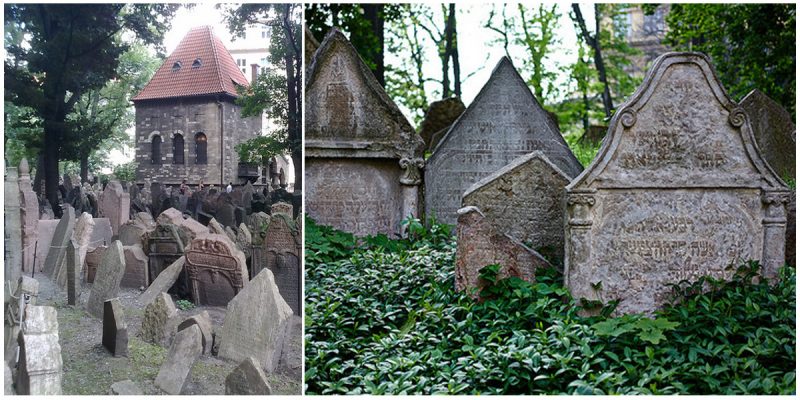The Old Jewish Cemetery in Prague is the second oldest Jewish cemetery in Europe. It is situated in Josefov, the former Prague Jewish Town, among old synagogues and other sights and served its purpose from the first half of 15th century till 1786.
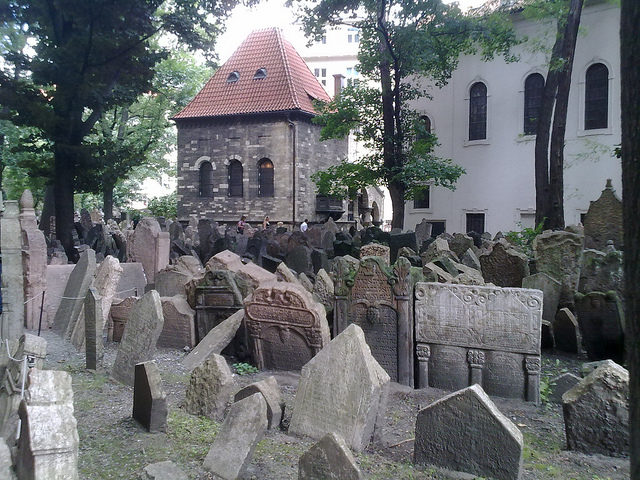
The tombstone of rabbi Avignor Kara was the earliest tombstone and dates back to 1439, and the first documented existence of the holy place goes back to 1438.
The last burial took place 348 years later.
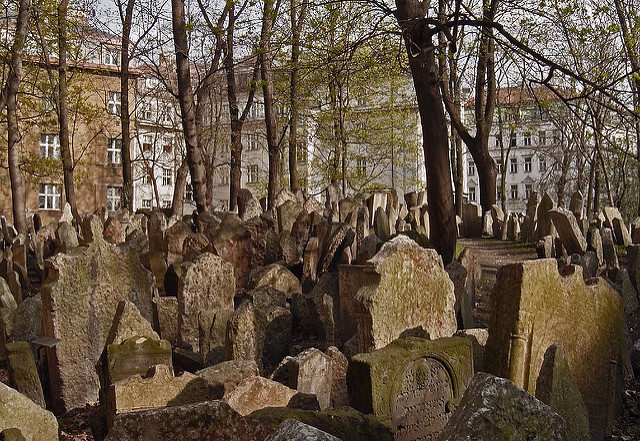
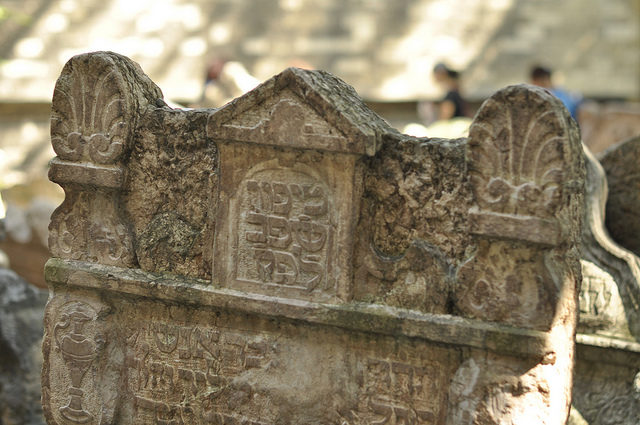
There are about 100,000 Jews interred in this cemetery and because of the lack of space, over the centuries the graves had to be put one on another, somewhere even in twelve layers.
There are about 12,000 tombstones in the cemetery, many decorated with animals and plant motifs that have inspired many works of art and literature by leading writers and artists.
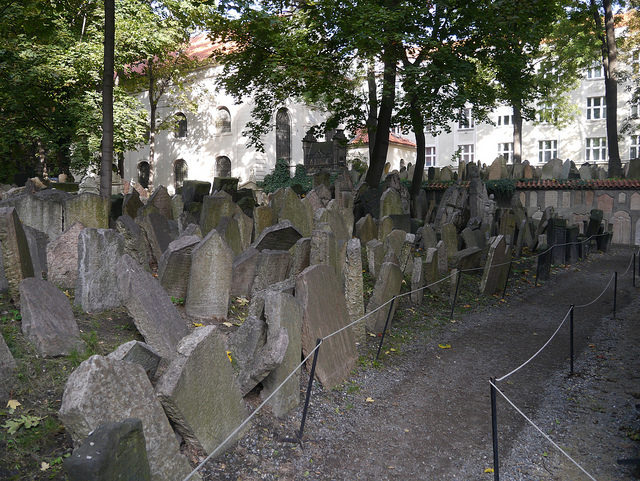
It is forbidden to picture dead people in the Jewish faith, so the gravestones characterize the deceased through various symbols, hinting at the life, character, name or profession of the people, etc.
For example, the musicians’ graves are adorned with a violin, scissors indicate a tailor, a crown belongs to the erudite men and an animal symbol mostly signifies the dead man’s surname.
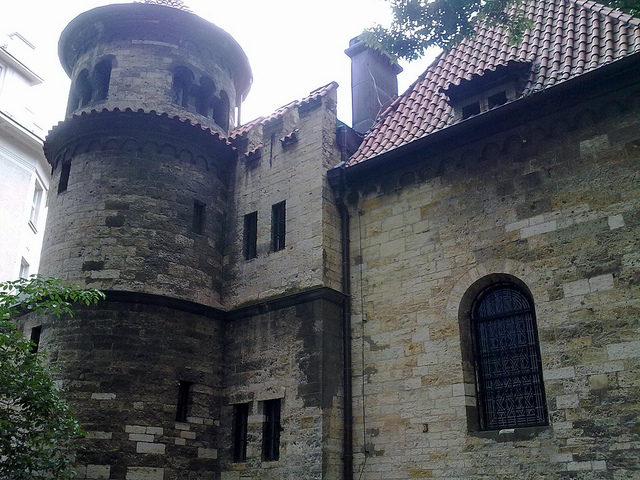
Interestingly, during the WW II, Hitler ordered for the old cemetery to be left intact. It is believed that he spared the cemetery so that it could be made into a “museum of an extinct race”.
The proposed museum would have collected the increasing number of Jewish possessions after killing all the Jews in Europe.
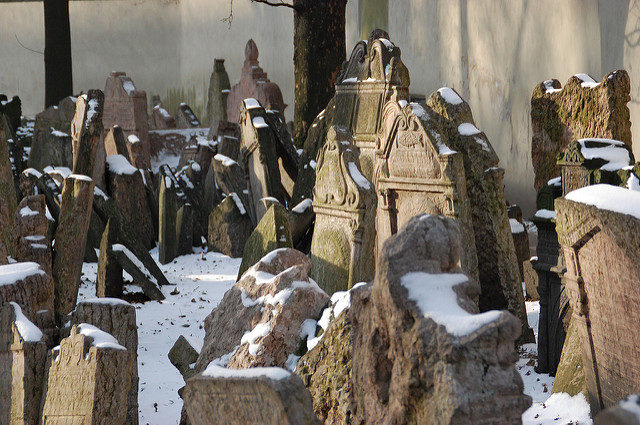
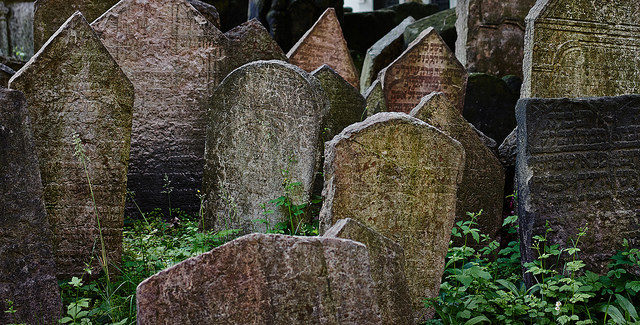
Some famous Jews are buried here, among them rabbi Jehuda Liva ben Becalel-Maharal, rabbi, and scholar Avigdor Kara, Mordechai ben Samuel Maisel, an entrepreneur and former 16th century Jewish Town mayor who had private synagogue built.
One of the most visited graves is that of the Rabbi Jehuda Low who lived during the 16th century and is said to have created the artificial, clay creature called the Golem. According to legend, Golem stood on the Jews side in bad times, but later became violent and had to be destroyed.
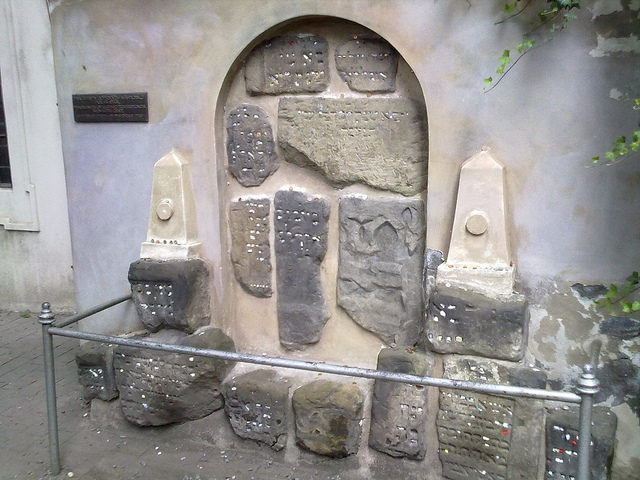
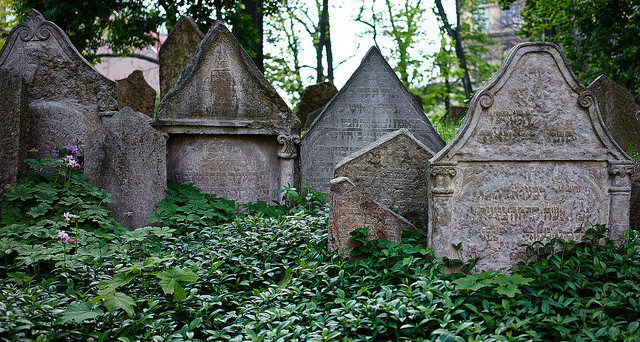
Sometimes visitors enter from the Pinkas Synagogue, which serves as a memorial to the victims of the Holocaust, and leave pebbles or prayers written on small pieces of paper on the tombstones.
